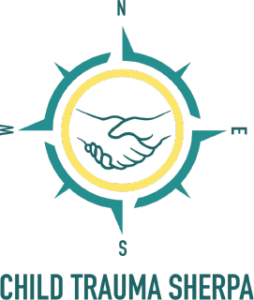Any parent understands that it is in a child’s nature to test the limits. However, for children with trauma, their poor behavior is caused by a brain injury. Despite this, it is key that you set boundaries for your adopted child with trauma. Boundaries not only help children respect others’ needs, but it also helps them understand and respect their own needs. In essence, this form of learning empathy helps your child with trauma heal and learn to make meaningful connections with others.
Why Children with Trauma Need Boundaries
All kids feel insecure when they don’t have clear limits. And for a child with trauma, this can only serve to re-traumatize them. This is because children with trauma experienced a loss of safety and trust with the adults in their lives. The first key in helping your child heal is to create a sense of safety and trust for your child. Not providing clear boundaries shifts the power balance toward your child, which is harmful for everyone in the family.
Setting Boundaries for Children with Trauma
Here are some tips to help you set boundaries for your child who is dealing with trauma.
Be trustworthy. Your child needs to know that they can count on you. This means backing up what you say with action or your words will no longer mean anything.
Be consistent. Don’t move the boundaries you set or flip-flop on what the boundaries are.
Model the behavior you want. This will teach your child with trauma to express their opinions and needs in a more respectful manner. No matter the situation, speak to your child kindly. Be firm but friendly when you do discipline. Never yell or belittle your child when they do something wrong or behave badly.
Less is more. Sometimes, five rules respected 100% of the time are better than 15 rules with partial compliance.
Avoid labeling your child as good or bad. Children with trauma don’t respond to consequences good or bad; however, calling your child bad for their behavior can only serve to create or maintain a negative self-image.
Never undermine the other parent. Parents must have each other’s backs in order to provide stability and consistency. Remember, a house divided is a house that falls.
Parent your child where they are developmentally, not chronologically. As parents of children with trauma, it is key that you adjust your mindset and understand that trauma causes delays in learning, connection and behavioral control. This means that you need to parent your child where they are, and not where anyone else thinks they should be.
Changing Your Reaction When Bad Behavior Does Happen
Even after boundaries are set, poor behavior will continue until your child learns that he or she can trust you and feels safe with you. Unfortunately, many reactions that adults have to poor behavior can often re-traumatize your adopted child. As a parent, you need to be conscious of being in the “moment” when interacting with your child. Instead of yelling or handing out consequences, offer stable, non-emotional responses to their behaviors. This allows your child the space and time they need to work through their trauma and heal over time.
Validate Your Child’s Feelings
Kids with trauma will often say some outrageous things usually because of fear and pain (due to their past neglect, abandonment and their loss of trust in adults). One of the most important things you can do as a parent is to validate their feelings, even while setting boundaries, to help them overcome those fears, learn to trust their caregivers and heal over time.
Conclusion
Remember that you are an amazing parent with a great child. The key to helping your adopted child with trauma lies in consistency. This means consistency in what the boundaries are, how you react to poor behavior, and consistency through your “team” by being on the same page when it comes to helping your child. By providing this consistency, you can begin to build a safe and trusting relationship with your child and help them heal from their childhood trauma over time.
Need more support and ideas? Join our Facebook group for parents of children with trauma. Our goal is to equip parents of adopted children with a purpose driven approach that creates hope and healing.


